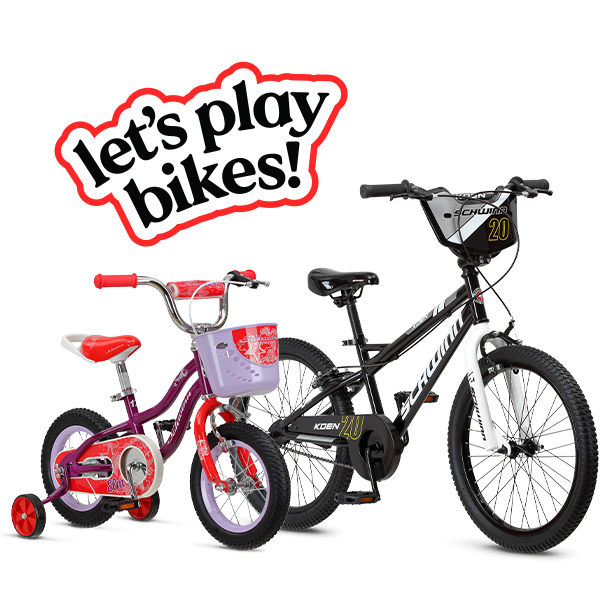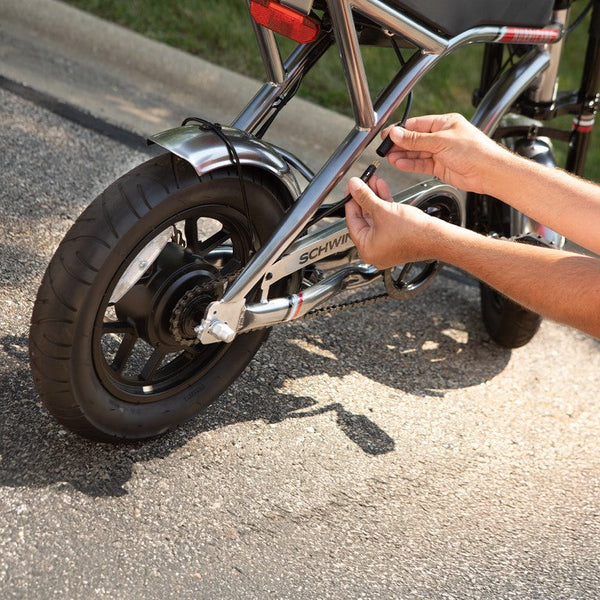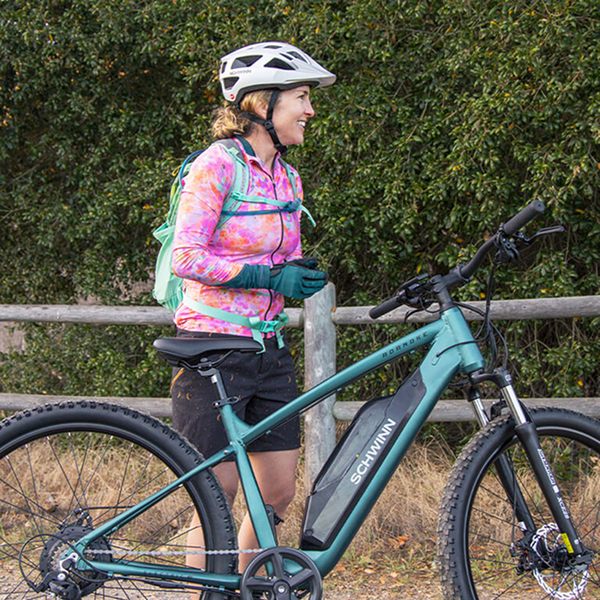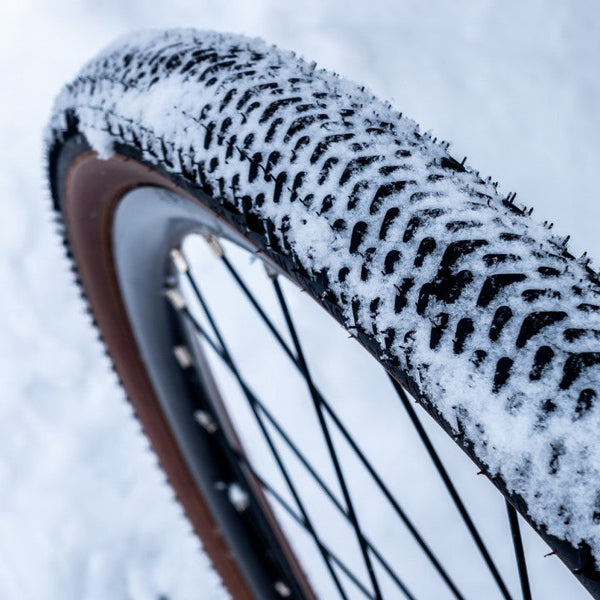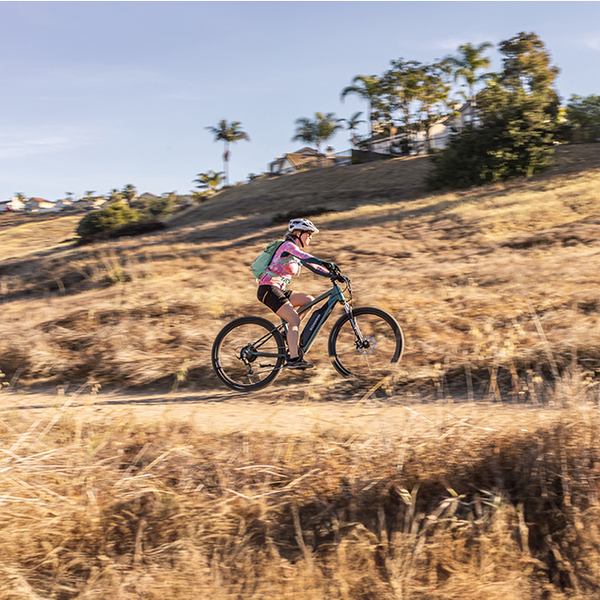You’re one step closer to hittin’ the pavement on your Schwinn electric bike! Before riding, always make sure your tires are inflated and that your brakes are working properly. Read the quick start guide below and your Schwinn bicycle owner’s manual. Both contain important safety information.
You’ll need the following tools:
- 3 and 4 mm hex keys
- Philips head screwdriver
- Box cutter, cable cutter, or scissors
- Pedal wrench or adjustable wrench
Let’s get started!

Unbox
Take all bike parts out of the box and remove packaging materials.

Install Handlebars
Use a 4 mm hex wrench to loosen the four bolts securing the stem face plate and remove the face plate. Place the handlebar in the stem and verify the brake and shift cables wrap around the frame without kinks or twisting.
Reinstall the stem face plate and bolts in place. Center the handlebar in the stem and rotate the handlebar to a comfortable position. Tighten the four faceplate bolts as evenly as possible, alternating in a crisscross pattern so the gap between the stem and faceplate is equal top to bottom and left to right.

Connect Controller
Connect the red, blue and yellow cables from the handlebar to the corresponding cable at the head tube, or front of the bicycle. Simply line up the arrows on the plugs and press together. The colors on the plugs should disappear when they are properly connected.
Slide the controller into place on the left side of the handlebar. Rotate into position and secure with a 3 mm hex key.

Install Seatpost
Open the seatpost quick-release lever, then slide the seatpost into the frame. Ensure the seatpost is inserted past the minimum insertion line marked on the post. Close the seatpost quick-release lever.

Install Front Light
Use a Phillips screwdriver to attach the front light mounting bracket to the mounting point on the suspension fork lower leg arch.

Attach Wheel
Locate the quick-release skewer. Remove the adjusting nut and one spring. insert the quick-release skewer through the front wheel axle, from the side opposite the brake disc. Reinstall the spring, narrow end first, and lightly tighten the adjusting nut.
Remove the fork spacer at the dropouts. Lift the front of the bike and roll the wheel back, ensuring the brake disc goes into the brake caliper, then lower the fork dropouts onto the axle. Tighten the adjusting nut, then close the quick-release lever.

Install Pedals
Lightly grease pedal threads with a lithium-based grease. Carefully hand-thread pedals into the crank arm. Note that pedals are side specific, as designated by the R (gear-side) and L (non gear-side) stickers on the pedals. The L, non gear-side pedal is reverse threaded. Securely tighten pedals with a pedal or adjustable wrench

Adjustments & Safety Check
Adjust seat height. It should be about hip level when you’re standing next to the bike.

Verify Brakes Work
Squeeze the brake levers. Confirm that all control cables are properly seated and securely engaged, and that you can apply full braking force on the levers without the levers touching the handlebar. While squeezing the brakes, attempt to roll the bike back and forth; confirm that the brakes are operating correctly. If not, your brakes may need adjustment. Do not ride the bike until the brakes are properly adjusted by a qualified bicycle mechanic

Check Tires
Inflate the tires to the manufacturer’s recommended pressure, which is marked on the tire sidewall.

Battery & Controller
Ensure battery is charged.
Press the power button on the battery pack to turn on the battery. Next, press and hold the power button on the user interface to turn on the pedal assist system and illuminate the display. Test functions before first ride.
And that’s it! Just put on your helmet and you’re ready to ride.

